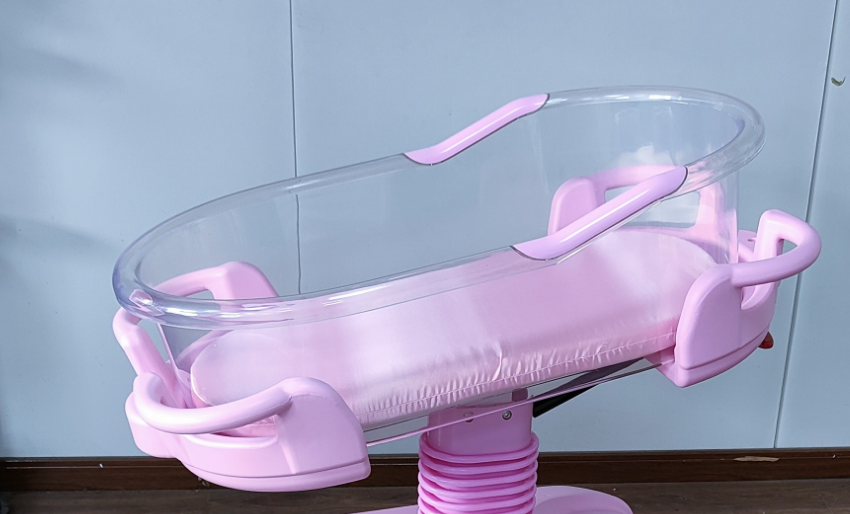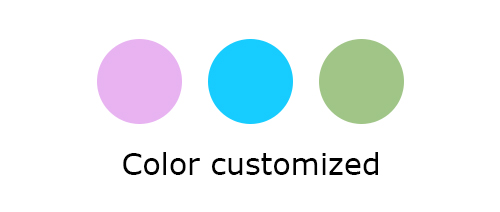Customizing Hospital Crib Beds for Middle Eastern Markets
From my experience, to design hospital crib beds for the Middle East, you need to understand two key things: the local environment and the culture. I believe this is how manufacturers can best meet what the market wants.
Grace Medy as a hospital crib beds manufacturer, througth customizing hospital crib beds for the Middle Eastern market by addressing specific environmental, cultural, and regulatory demands.
Understanding the regional climate, we construct crib frames from rust-resistant materials like stainless steel, aluminum, and ABS, ensuring longevity in hot, dry conditions.
Mattresses feature breathable, durable covers (such as plant-based or certified organic cotton) and open-cell, temperature-neutral foams for optimal infant comfort and airflow.
Culturally, designs incorporate removable side panels or clear walls to facilitate frequent
family interaction, alongside height-adjustable beds enhancing comfort for visitors and accessibility for staff.

Recognizing local requirements, all instructions and controls are provided bilingually in Arabic and English.
Finally, Grace Medy accommodates institutional branding needs, offering custom color schemes and integrating hospital or health ministry logos on crib panels and bedding to reinforce identity.

Market Overview and Growth Drivers
From what I see, the hospital bed market in the Middle East & Africa is set to grow. It should hit $175 million by 2032. This is a growth rate of 6.8% each year from 2025 to 2032. I find that hospital cribs are a huge part of this growth for a few key reasons:

Demographic and Policy Drivers
High Regional Birth Rates: I’ve observed that countries like Saudi Arabia and the UAE have very high birth rates. They also have more premature births. This creates a clear need for better cribs for newborns and young children.
Government Initiatives: I have seen that government plans like Saudi Vision 2030 are making a big difference. Qatar and the UAE are also spending more on healthcare. This leads to new hospitals and big upgrades. These new facilities have tough rules for baby safety and stopping infections, which affects how cribs need to be designed.
Rising Neonatal Care Investments: Both government and private companies are putting money into special hospitals for mothers and children. In my opinion, this is why the need for custom-made children’s beds is going up.
Technological and Market Trends
Smart Bed Solutions: I’ve noticed hospitals are quickly adopting smart cribs. I recommend looking for models with features like these:
Remote smart monitoring of an infant’s vital signs
Height and angle changes(Trendelenburg position) for better ergonomics and care
Built-in light therapy and temperature monitoring, which I see top UAE hospitals already use
Germ-resistant, easy-to-clean surfaces
Built-in scales, alarms, and safe-slide barriers
Demand for All-in-One Cribs: From my experience, hospitals prefer cribs that do more than one thing. They want cribs with built-in light therapy, vital sign monitors, movable storage, and better infection control.
Need for Quick Customization: Buyers want fast production, often within 5–7 business days. I suggest suppliers be ready to change colors, logos, and materials for local needs.
Market Structure and Leading Suppliers
In 2024, hospitals were the main customers for hospital furniture in the region. They spent $0.66 billion. A large part of this money went to custom cribs for newborns and infants.
I see some major global suppliers meeting the Middle East’s needs. These include Stryker Corporation, Grace Medy, Getinge, Stiegelmeyer, LINET Group, and Savion Industries. I’ve noticed these companies now focus on customizing for the local market and following all regional rules.
Market Challenges
Shorter Hospital Stays: More patients are having simpler procedures that require less recovery time. In my view, this can mean less need for long-term bed use, which could affect the demand for cribs.
Limited Resources: I believe that some countries face shortages of healthcare staff and money. This can delay them from buying the most advanced cribs.
Growth Outlook
Based on my experience, several factors keep pushing the market forward. These include population growth, government spending on new facilities, and the use of smart and clean crib technologies. I suggest the main focus should be on adapting products to the local climate, culture, and strict safety rules. I see more teamwork between governments and private companies. I think this will grow the market for custom hospital crib beds even more in the area.
Key Trends in Hospital Crib Design and Features
I’ve seen hospital crib design change fast. This is particularly true in Middle Eastern markets. In this region, a mix of local needs and new global ideas shapes what products become popular.
Customizable and Modular Hospital Cribs
Based on what I’ve seen, customizable and modular designs are now the standard. Hospitals prefer crib beds that can fit into different spaces and meet changing care needs. I recommend offering flexible frame options and the ability to personalize features. This includes color, branding, and accessories, which help hospitals match the cribs to their identity. You can see this with the personalized designs from Grace Medy.
Technological Integration in Crib Beds
I notice a high demand for smart crib technology. Modern cribs often include built-in monitoring systems and temperature control. They also feature alarms and connect to mobile apps. These products give families and staff real-time safety information and make infant care much simpler.
Advanced Materials and Hygiene
In my opinion, germ-resistant and easy-to-clean materials are critical. This meets the region’s strong standards for infection control. I’ve found that materials like stainless steel, aluminum, and high-grade plastics are popular. This is because they allow for quick cleaning and help hospitals meet hygiene rules between patients.
Enhanced Safety and Ergonomics
New safety features are a basic expectation now. Hospitals look for cribs with advanced lock systems and stronger side rails. They also want products that pass strict testing beyond local regulations. I think Grace Medy’s Safety-First initiative are worth noting. From my perspective, height-adjustable cribs are a smart choice because they help with newborn care and improve comfort for nursing staff.
Mobility and Multi-Functionality
I believe that improving mobility is very important. Features like strong wheels and lightweight frames make it easier to move cribs around a busy hospital. Multi-functional designs are also a great selling point. They allow a single crib to be used for different types of care. This supports both neonatal intensive care and standard pediatric rooms.
Through my journey in this industry, I’ve learned that success in the Middle Eastern market comes from truly listening to local needs. The combination of cultural sensitivity, environmental adaptation, and cutting-edge technology isn’t just good business—it’s about creating safer spaces for the region’s most vulnerable patients. As this market continues to grow, I’m excited to see how innovation will further transform infant care across the Middle East.
